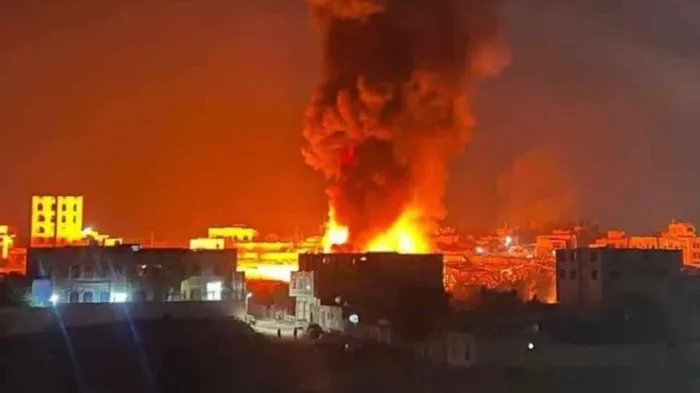Dozens Killed and Injured in U.S. Airstrikes on Yemen’s Capital Sana’a
By Kardo Roj
SANA’A, Yemen (North Press) – U.S. airstrikes on Monday targeted positions held by the Iran-aligned Houthi group in the Yemeni capital, Sana’a, leaving at least 12 people dead and 34 injured, according to Houthi-run media and health authorities.
The airstrikes, reportedly carried out by American fighter jets, struck multiple locations in the densely populated Furwah district in Sana’a. The Houthi-controlled Ministry of Health stated that the casualties included civilians, though these claims have not yet been independently verified.
The strikes mark a significant escalation amid growing tensions in the Red Sea and Gulf of Aden, where Houthi forces have stepped up attacks against what they describe as U.S. and Israeli military and commercial vessels.
Earlier on Monday, a military spokesperson for the Houthis claimed responsibility for targeting American and Israeli aircraft carriers, in what the group framed as part of its support for Palestinian factions amid the ongoing Israel-Gaza conflict.
While the U.S. Department of Defense has not released an official statement regarding the Sana’a strikes, the operation appears to be a retaliatory measure following those alleged Houthi attacks. U.S. naval forces in the region have previously intercepted drones and missiles launched by Houthi forces, labeling them a threat to regional maritime security.
Houthi officials released images showing damage to residential and commercial structures in Furwah, with emergency workers and civilians seen pulling survivors from debris. Hospitals in Sana’a have issued appeals for blood donations, and civil defense units continue recovery operations in the affected areas.
The Houthi-run health ministry accused Washington of violating Yemen’s sovereignty and endangering civilian lives, a narrative that has drawn attention across the region. International human rights organizations have not yet commented on the strike, though prior U.S. operations in Yemen have faced scrutiny over civilian casualties.
Yemen’s war, now in its second decade, has increasingly become a theater for proxy conflict between regional and international actors. The Houthis, who seized control of Sana’a in 2014, are backed politically and militarily by Iran, while the internationally recognized Yemeni government receives support from Saudi Arabia and, intermittently, the United States.
U.S. military involvement has largely focused on counterterrorism and securing maritime corridors. However, recent developments suggest a broader operational scope, especially amid rising regional tensions linked to the Gaza war and Iran-Israel confrontations.
The Houthis have leveraged the regional conflict narrative to justify cross-border attacks, particularly against Israel and U.S. assets. These actions, though symbolic, have drawn forceful responses from Washington and its allies, aiming to curb the group’s reach and influence.

